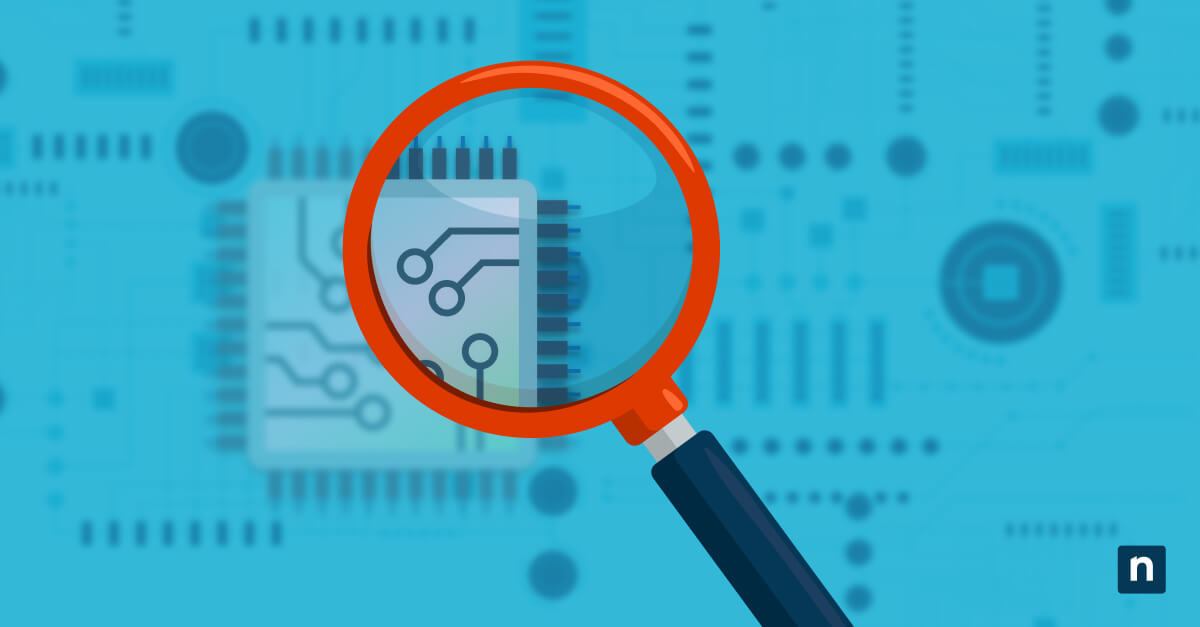It’s true that network assessments take time, but they are worth every second. Today, businesses around the globe struggle to keep their networks and data secure. In fact, TechTarget’s list of 2022 cybersecurity statistics announces that “the cost of cybercrime is predicted to hit $10.5 trillion by 2025.” However, with routine network assessments and with network assessment software, businesses can reduce threats and keep their IT infrastructures running smoothly.
What is a network assessment?
A network assessment is an evaluation, or analysis, of an existing network infrastructure. After a thorough evaluation, you will have a detailed report on the current status of your entire network. Although network assessments can take some time, they are essential for the safety and success of any IT department or MSP.
Benefits of network assessments
Network assessments provide a multitude of benefits for IT departments. A successful network assessment can aid in identifying bottlenecks, setting performance standards, managing network inventory, tightening security, and finding areas for improvement.
How to perform a network assessment in 6 steps
Since a network assessment is a complex process, departments often break it down into multiple steps. A simple network assessment should include the following steps:
1) Create network assessment objectives
What do you want to know about your network? What are some network issues that you want to solve? These are the types of questions that are often included in network assessment objectives. These objectives define what you expect to gain from a network assessment.
2) Record current network inventory
After writing down some network assessment objectives, it’s time to record the current IT inventory that is connected to the network. You’ll want to document all hardware, software, devices, and other tools that are connected to the network.
3) Analyze security
Businesses are constantly sharing data with involved parties. An article on data security by Virtrue declares that “44% of organizations share data on a continuous basis, 26% share data daily, and another 13% share data every hour.” To ensure that their data remains safe, organizations analyze the security of their networks during their network assessments.
4) Conduct a performance evaluation
A performance evaluation analyses the current capabilities of your network. It tests a network’s speed, efficiency, traffic flow, visibility, manageability, and more. This step will identify bottlenecks and unresolved issues to ensure that a network functions at peak performance.
5) Organize quantitative & qualitative data
This step organizes and arranges all quantitative and qualitative data that was gathered from the assessments. The documentation of the data will answer the network assessment objectives that were created in the first step of this process.
6) Obtain final network assessment report
The final step in this process is to bring all the data and information together for a complete network assessment report. At this point, you will have a clear understanding of your current IT infrastructure and network.
What is network assessment software?
Network assessment software automates the assessment process and provides clear insight into your IT infrastructure. With network assessment software, MSPs and internal IT departments save time, resources, and effort while ensuring the health of their networks.
3 types of network assessment tools
Network assessment tools offer a variety of helpful features, such as reports, security scans, IT inventories, checklists, and more. Here are a few common network assessment tools that are a part of network assessment software.
-
Monitoring & management tools
RMM, or remote monitoring and management, tools provide real-time insight into your current IT network and all its inventory, which comes in handy during a network assessment. NinjaOne’s RMM also offers patching, automation, and endpoint management to make managing your network and IT assets as easy as possible.
-
Documentation tools
Accurate documentation is essential for network assessments. Instead of static documentation that only shows information from a certain point in time, NinjaOne’s IT asset management offers a live view through network monitoring.
-
Security tools
Security tools search for vulnerabilities that may exist within your network. NinjaOne’s custom fields solution allows users to create their own vulnerability monitoring for network assessments.
How to choose network assessment software
There are plenty of network assessment software options out there, so how can you choose the best one for your business? First, find a few possible software choices that offer all the features you require and seem to be a great fit for your department. From there, make a pros and cons list to determine which one is the best fit. After you have a possible software candidate in mind, demo the service and see for yourself how it benefits your business.
Manage your IT networks with NinjaOne
Regular network assessments provide valuable information about the current state of a network and all its IT assets. Sign up for a free trial from NinjaOne to start managing your networks and creating a safer, more efficient IT infrastructure.








